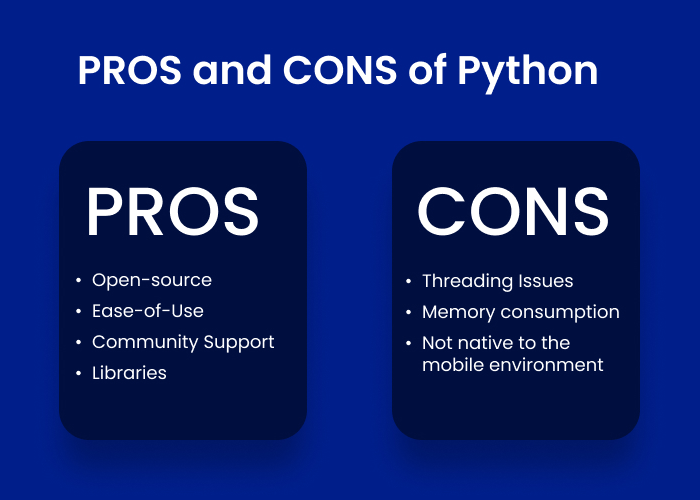
Python is a well-liked programming language due to its accessible structure, clear documentation, and broad applicability. It finds usage in many contexts, including but not limited to the creation of websites, the analysis of data, the creation of AI, the processing of scientific data, and many more. Python online courses have grown in popularity for students to gain programming skills because of the growth of distance learning. Here are some benefits and drawbacks of enrolling in a Python Online Course
Pros
-
Flexibility
Flexibility is among the most significant benefits of taking Python classes online. Students get unlimited course access and can complete their work whenever and wherever they have an internet connection. The flexibility of online learning makes it an excellent choice for people with demanding schedules, such as full-time workers, students, and parents.
-
Self-paced Learning
Most online Python classes are self-paced so that students can learn at their level of convenience. This allows students to spend more time on more familiar topics or return to more hard ones as needed. With self-paced learning, students may tailor their education to fit their unique goals and schedules.
-
Engaging Learning
Online platforms have various Python courses, which feature interactive learning experiences with coding exercises, quizzes, and projects. Learning is reinforced, and memory is increased when students actively engage with the subject matter and interactively practice their abilities.
-
Cost-effective
Sometimes, taking a Python course online can save you money compared to attending an in-person class. Many people find that taking classes online is more financially practical because they don’t have to spend money on things like gas, lodging, or food while learning.
Cons
-
Lack of Personal Contact
One major drawback of taking a Python course online is the inability to engage directly with your teacher and fellow students. This could mean that students miss out on the social aspects of learning, connecting with their classmates, and possibilities for instant feedback and explanation.
-
Insufficient Experience
Some research suggests that while online Python classes can be helpful, they may not provide as much hands-on training as traditional classroom settings. Lack of exposure to real-world Python projects, internships, or other practical applications may restrict students’ ability to apply what they’ve learned.
-
Courses vary in Quality
There is a wide range of alternatives for Python online courses, and the quality of these courses varies widely amongst providers. Students learning experience and outcomes may be negatively impacted if some courses do not have good curriculum design, current content, or skilled teachers.
-
Technical Difficulties
Technical concerns, such as those with the online platform itself, the internet connection, or the installation of necessary software, are a possibility for distance education. It’s not uncommon for students to become frustrated because of technical issues that arise during class.
Conclusion
If you want to learn Python and be free to study when and where it works best for you, then enrolling in an online course is a great choice. However, not everyone thrives online, requiring initiative and reliance on technology. Making personal connections with other students and faculty members cannot be easy. When choosing between online and traditional classes, students should consider their personal learning interests, goals, and circumstances.










